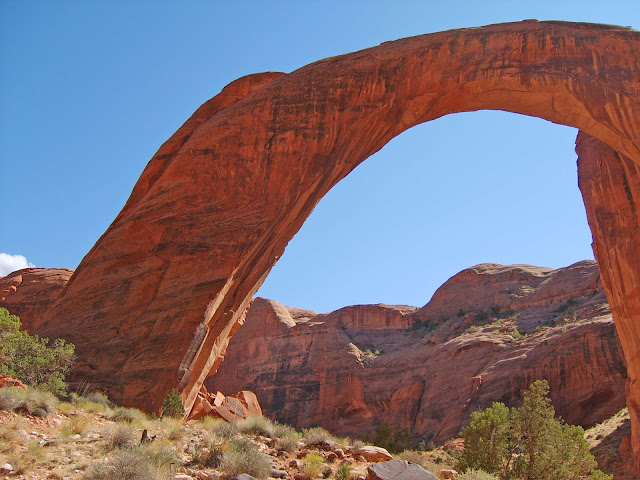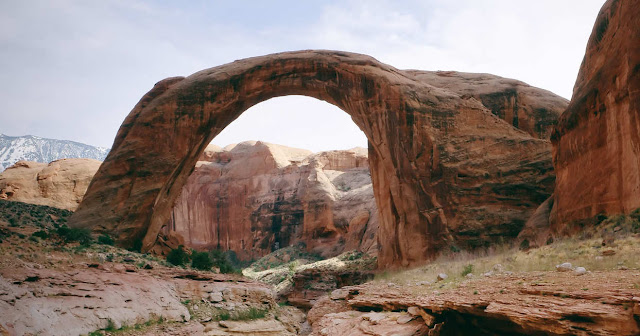Rainbow Bridge is often considered
as the World’s Highest Natural Bridge in Southern Utah, United States. The span
of Rainbow Bridge is approximately 290 ft tall, spans 275 ft and the top is 42
feet thick and 33 feet wide. The Native American tribes regarded the bridge as
cultural importance.
The two famous natural arches,
Landscape Arch and Kolob Arch are longer than Rainbow Bridge in Southern Utah.
However, they are arches, and the rainbow is a bridge. The Chad Aloba Arch has
outdone with 394 feet. Finally, Xianren bridge (Fairy Bridge) in Guangxi
Province has a span of about 295 feet and a height of 210 feet, appears to be
the largest span natural bridge in the world. Therefore, the world’s tallest
arch is Toshuk Tagh in China at an estimated 1,200 feet.
Rainbow Bridge is accessible by a
two-hour boat ride on Lake Powell followed by a mile-long walk from the
National Park wharf in Bridge Canyon, or by hiking several days overland from a
trailhead on the south side of Lake Powell.
Rainbow Bridge is made from
sandstone firstly deposited by wind as sand dunes, during the Jurassic times.
The severe fluctuations in climate were alternately a sea and desert on par
with the Sahara—produced layers of sandstone with different levels of hardness.
However, by the end of the Jurassic, the sea returned to cover these layers of
sandstone and compressed them so tightly that they would persist until the
present day.
Rainbow Bridge is located in the
rugged, isolated canyons at the feet of the Navajo Mountain. Native Americans
knew the bridge as scared for many centuries as a symbol of deities responsible
for creating clouds, rainbows, and rain. Many Native American families are
still living here. In the early 18the century, cowboys, prospectors, and
wandering trappers saw the Rainbow Bridge and did not notice too much. In 1909,
Rainbow Bridge's existence came to know by the outside world. In the 1930’s
former U.S. President William Howard Taft declared Rainbow Bridge National
Monument.
In 1924 a road was built from Red
Lake to the West side of the Navajo Mountain. Also, construct a rustic stone
building and facilities for mules and tourists, named it Rainbow Lodge. Zane
Grey and Teddy Roosevelt was the first tourist to make the trek by foot and
horseback from Oljetor to Navajo Mountain. Then they established a trail till
Cliff Canyon, then over Redbud Pass to Bridge Canyon. One can make 14 miles
trip in one day by horse or mule.







No comments:
Post a Comment